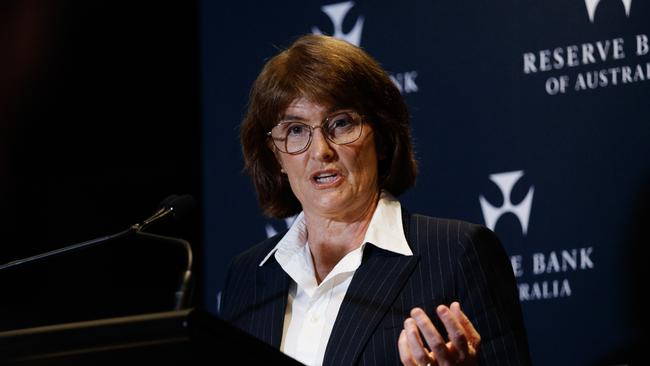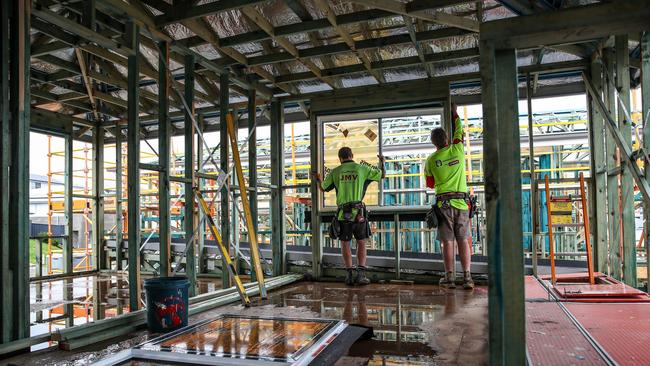Generation Next faces higher housing costs as asset-rich boomers set for another big win
More housing supply would slow rampant growth in property prices and ease the immense financial strains on young workers.

Whenever the Reserve Bank makes a move on interest rates, our agile asset-rich elders adjust their game plans and behaviour. When the cash rate went up, as it did over 2022 and 2023, savers got higher returns; on the way down, they can expect a resurgence in the value of their property, shares and superannuation balance.
Take this week’s quarter-point cut by the central bank’s monetary policy board. What the cashed-up lose, say, on the swing of lower returns from term deposits, they gain on the roundabout of rising property prices and, more likely than not, the major bank shares in their portfolios.
Boomers for the win!
Younger generations? The RBA’s second cut in three months in borrowing rates will free up cashflow for those with mortgage debt while allowing some first-home buyers to crack the market.
But, as in previous monetary easings, there’s a good chance home prices will start to rise and younger buyers will feel the game is always tilted to existing homeowners. At her press conference on Tuesday, Michele Bullock said the possibility of rising property prices would not stop the board from cutting the cash rate in the future.

“If we start thinking about ‘do we lower interest rates because of housing prices’, we’re going to take our eye off the ball, which is inflation and employment, and I don’t think that would be the right thing to do,” the RBA governor told reporters.
“I acknowledge that some people are worried that as interest rates come down, housing prices will rise, but other policies have really got to step up here and address what is a housing shortage.”
New research from the Australian National University’s Tax and Transfer Policy Institute details how the so-called intergenerational contract is out of whack. Peter Varela, Robert Breunig and Matthew Smith (all from the Crawford School of Public Policy) show government spending targeting older Australians has increased significantly in real, per-person terms across the past three decades. This is not due to an ageing population; it’s spending per person, which for younger people has been relatively steady.
As well, older Australians have earned significantly more private income due to higher capital income from real estate and superannuation. Put these trends together and effectively we have a social revolution: a revamped tax and transfer system and a new order in the age profile of the final (after tax and transfers) income distribution.
This is no accident but the result of policy settings that “increasingly favour older Australians at the expense of younger Australians”.
We’re talking about bracket creep in the personal income tax system; the means-testing of pensions; tax treatment of owner-occupied housing and superannuation; and restrictive zoning laws and planning systems that inflate land values.
“In earlier periods, older Australians earned relatively little income while the tax and transfer system provided income and in-kind support,” the authors write in a paper published this month.
“However, as Australian retirees have accumulated significant wealth and associated capital income, the Australian tax and transfer system has not adjusted. It has instead increased support to this cohort.
“As a result, Australians over the age of 60 have enjoyed a post-tax income similar to that of mid-career working-age Australians and much higher than Australians aged 18-30.”

The metrics are stunning. Once the tax and transfer system kicks in, the over-60s group has an average after-tax income 60 per cent higher than the youngest cohort of working Australians. A key finding in the research paper is the boom in house prices has increased the wealth of older Australians, generating substantial growth in private income in capital gains and imputed rent, which is the technical term for the value people gain from living in housing they own.
“This income has come at the expense of younger Australians and migrants buying into the housing market,” the ANU authors write. “To the extent that housing prices are driven by government policies that restrict land supply, these policies should be reversed as a matter of urgency. This would generate large equity and efficiency gains.”
Landmark 2018 RBA research by Ross Kendall and Peter Tulip found zoning raised detached house prices 73 per cent above marginal costs in Sydney, 69 per cent in Melbourne, 42 per cent in Brisbane and 54 per cent in Perth.
Tax breaks, heritage protections, NIMBYism, disincentives for retirees to downsize and ultra-loose monetary policy during the pandemic have pushed up residential property prices. As well, we’re not building enough homes to meet demand: period. As Bullock said, governments need to step up.

The central bank’s latest “soft data” from home builders shows completion of projects outstripped new sales; their pipeline of future activity has declined. The RBA’s liaison found “a moderate increase in speculative building activity” across the past year. “Most home builders expect to see a boost in home sales after the federal election and if there are further cuts to interest rates,” the quarterly Statement of Monetary Policy said. “That said, contacts remain concerned about affordability constraints.”
This week the National Housing Supply and Affordability Council reported a deterioration in affordability in 2024, as housing costs increased at a faster rate than incomes. A median-income household needed 50 per cent of their income to service the average new mortgage; for renters the share of income needed to pay rent for the median new lease rose to 33 per cent.
For aspiring homeowners, the average number of years required to save for a (20 per cent) deposit rose to a near-record high of 10.6 years and the ratio of dwelling prices to income rose to 8. The share of homes for sale that a median-income household could afford declined to 14 per cent – its lowest level on record.

During the election campaign, Anthony Albanese promised to extend from January 2026 the first-home buyer guarantee scheme, with higher property price limits and no caps on places or income, allowing those with a 5 per cent deposit to buy a property without paying lenders mortgage insurance. Labor also would invest $10bn to build up to 100,000 homes for sale only to first-home buyers.
But the NHSAC’s State of the Housing System 2025 report found that on current delivery, only 78 per cent of Labor’s housing accord target of 1.2 million new homes would be completed by 2029, a deficit of 262,000 dwellings. The single biggest constraint on supply is that many housing projects are not commercially viable given current land, financing and development costs relative to expected sale prices. The “feasibility gap” is even greater for apartments.
While there are cyclical factors that push up material and labour costs, the council says structural issues plague the industry’s capacity to produce enough homes at reasonable prices.
Labour supply falls short because of defects in the training and migration systems.
Property Council of Australia chief executive Mike Zorbas said “the alarm bell continues to sound on national housing supply”. “Our skills and planning systems are not yet match fit for this century,” he said. “More than 30 per cent of the cost of a new home is government taxes and charges.”
As well, the NHSAC said industry productivity had not improved in three decades. Land for housing is limited and costly. The existing stock of homes is poorly used, while social housing has been in long-term decline. “Finally, the housing policy system is fragmented and disjointed, and housing outcomes are often subordinate relative to other policy objectives,” the NHSAC said.
Economist Hugh Hartigan tells Inquirer the NHSAC report clearly shows a sustained focus on reducing construction costs will yield the greatest benefits. In one modelled scenario, an unexpected 20 per cent drop in the cost of a dwelling from the June quarter would deliver tens of thousands of extra homes beyond the business-as-usual trajectory. “It’s important to remember that regulations bring both benefits and costs,” the former head of research at Housing Australia says.

“It’s essential we understand the risk of unintended consequences from regulatory creep in residential construction, including well-intentioned changes around energy efficiency and design quality, which can inadvertently undermine feasibility and affordability.”
Hartigan says Australia is likely to see renewed demand in the housing system during the coming year, driven by lower interest rates, still-elevated population growth (though easing post-pandemic) and expanded support for first-home buyers: “That makes it even more critical to address the supply side of the market.”
Labor has been aggressive on the demand side of housing, all the while chasing the votes of younger Australians through fee-free TAFE and student debt relief during the cost-of-living crisis. It’s time to pivot to the supply side.
“The government is right to focus on improving outcomes for young Australians, including through its HELP debt relief, which should see over $5000 wiped from an average student loan,” says Hartigan. “But there’s arguably greater bang for buck in supporting younger generations by boosting housing supply, which would directly improve affordability.
“For example, if house prices in major cities like Sydney or Brisbane grew 5 per cent more slowly due to increased supply, that could reduce purchase prices by around $50,000, cutting borrower debt by up to 10 times more than the average benefit delivered by the HELP relief.”
Weaker growth in home values, let alone price falls, may not be on the boomers’ diet. Or a path to sustaining 62-year-old Albo’s super-majority in parliament. But something has got to give in our tax, transfer and regulatory set-up because the housing machine, defective for decades, is spluttering.
It’s dooming Generation Next to exorbitant costs and taxes, and a lower standard of living than their government-coddled parents and grandparents now enjoy.






